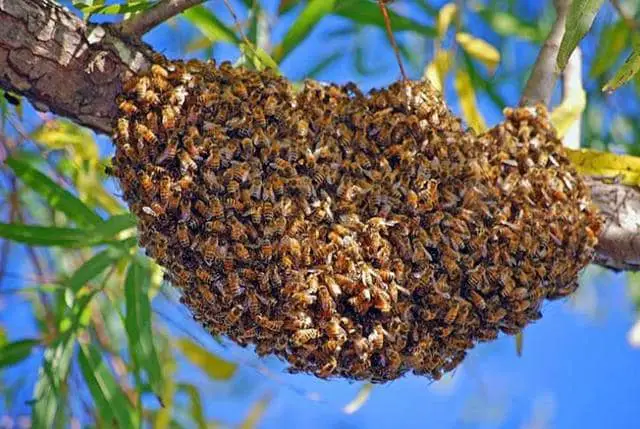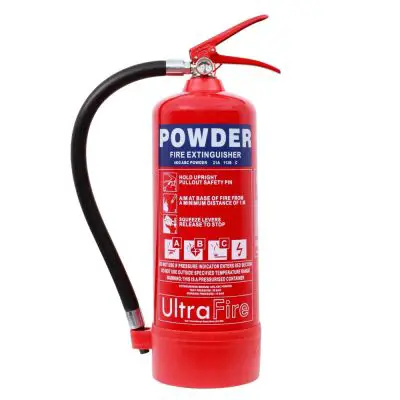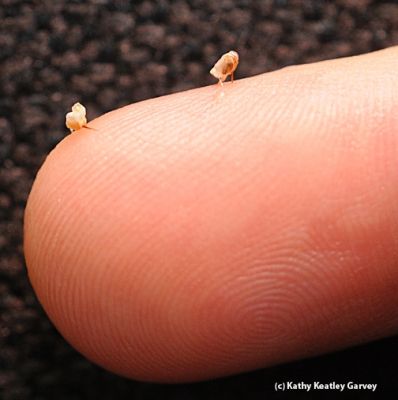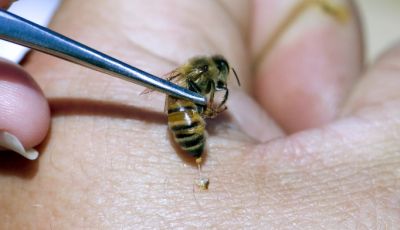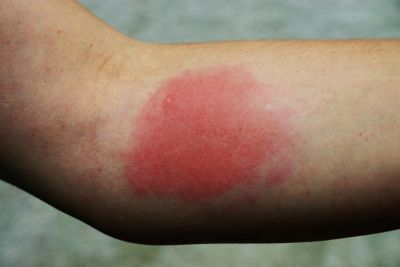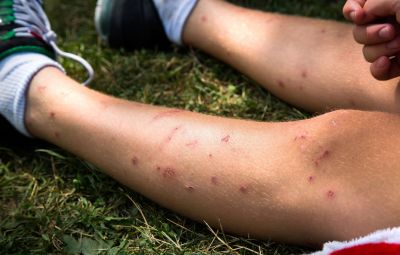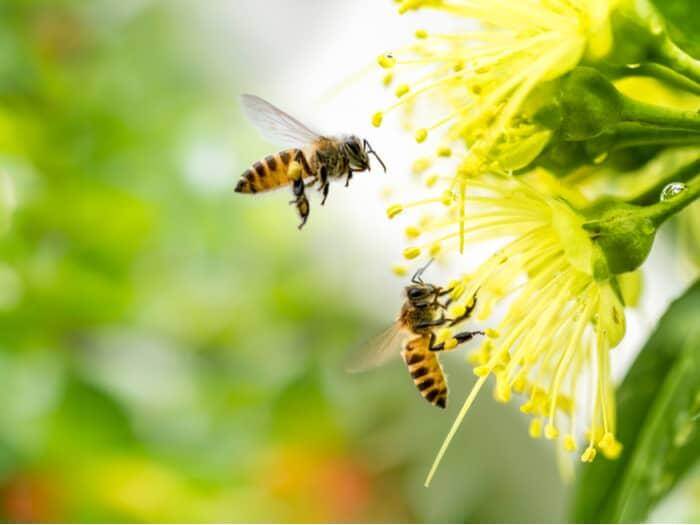
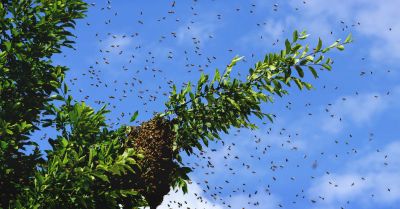
If you’ve been stung by a bee and aren’t using a protective bee suit, don’t try to swat it away.
Instead, you should run away from the bee as quickly as possible. The bee will usually follow you and any other bees it alerts
That is why it is critical to run rather than swat. You’re merely aggravating the bees by swatting at them, and you’re not doing anything to get them away from you. Avoid this natural reaction when being stung. Remember, don’t swat—run!
They’re quick runners, and unless you’re extremely fit, you won’t be able to keep up with them. You should go to a garage, house, or car if you’re near one. You may have a few bees with you who snuck past the door before entering the shelter, but the majority will be kept outside while inside.
Some folks have been attacked while riding their farm equipment in the field. It’s a good idea to keep a fire extinguisher available in such situations.
The extinguisher’s blast may be enough to kill the bees that are attacking you. It would be tough to do this deed on yourself.
This tip is especially useful if you’re watching, angry bees assaulting someone. Take a fire extinguisher and spray it in the direction of the bees and the individual who is getting stung.
Once the bees have calmed down, transfer the person to a safe place where no other bees can follow.
When being followed or assaulted by bees, many people make the mistake of jumping into water. There are several problems with this way of thinking.
For starters, many people are harmed near their houses. Pools are one of the most frequent bodies of water in residential areas.
The problem with pools is that they lure bees. Bees require water, and they enjoy chlorine, which is found in most pools. If you don’t want your pool to lure bees, try adding salt to the water.
The next difficulty is that the water only assists you while you are submerged. You’ll have to come up for air at some point. The bees will sting you when you try to breathe.
Finally, when your clothes get wet, they stick to you. As a result, when you finally try to escape the pool, the garments that formerly shielded you will now be skin-tight and provide little protection.
When you finally get away from the bees that have been chasing you, make sure you remove the stingers. The stingers will continue to inject venom into your body while they are in your skin. The venom produces allergic reactions and swelling in the wound.
As a result, scrape your skin with the edge of a credit card to remove the stingers. The less time they spend in your body, the less likely they are to do harm.
However, be careful that bee venom is extremely poisonous. It has the potential to trigger significant body reactions in a brief span of time. Move rapidly while keeping an eye on the injuries you’ve sustained.
If you get a tiny bee sting occasionally, it’s common for people to remove the stingers, take Benadryl, and monitor the wound for any adverse responses.
However, if you’ve been stung by a swarm of bees, you should get medical help right once. Even if you aren’t allergic to bees, the amount of venom delivered into your system at once could create an allergic reaction.
A bee sting will typically turn red and enlarge. Itching is also a common symptom. When you have a severe allergic reaction, your skin may break out in hives, you may have difficulty breathing or swallowing, your heart may race, you may experience dizziness, nausea and vomiting, and you can even faint.
You’re in trouble if you start experiencing these symptoms. As a result, it’s critical to get medical attention following a bee sting.
A medical practitioner can keep an eye on you and prescribe medications to assist you avoid having such severe reactions. They should also be able to spot indicators of a severe response before it gets out of hand.
- Extreme redness
- Swelling at the sting location that grows bigger over the next day or two.
Moderate reactions usually last five to ten days. A mild allergic reaction does not guarantee a severe allergic reaction the next time you are stung. However, some people have comparable mild reactions every time they are stung. If this happens to you, see your doctor about treatment and prevention, especially if the reaction gets worse over time.
- Skin reactions, including hives and itching and flushed or pale skin
- Difficulty breathing
- Swelling of the throat and tongue
- A weak, rapid pulse
- Nausea, vomiting or diarrhea
- Dizziness or fainting
- Loss of consciousness
A person who has a severe allergic reaction to a bee sting has a 25% to 65 percent probability of developing anaphylaxis the following time they are bitten. If you get stung again, talk to your doctor or an allergy specialist about preventative treatments like immunotherapy (“allergy shots”) to avoid a repeat reaction.
Bees and wasps, for example, are generally not hostile and only sting in self-defense. Most of the time, this results in one or more stings. A person may be stung several times if they disturb a hive or swarm of bees. Some bees, such as Africanized honeybees, are more inclined to swarm and sting in a group than others.
If you get stung more than a dozen times, the venom might build up and cause a toxic reaction, making you sick. Among the signs and symptoms are:
- Nausea, vomiting or diarrhea
- Headache
- A feeling of spinning (vertigo)
- Convulsions
- Fever
- Dizziness or fainting
Multiple stings can be a medical emergency in children, older adults, and people who have heart or breathing problems.
Bee stings are frequently treated with a combination of first-aid and home treatments.
Scientific evidence does not support several of the most prevalent at-home therapies for bee stung symptoms. Despite this, they’ve been passed down for the centuries and remain popular.
It’s vital to keep in mind that none of these home cures should make the sting any worse. Stop and clean the sting with soap and water if this happens, and don’t use that strategy again.
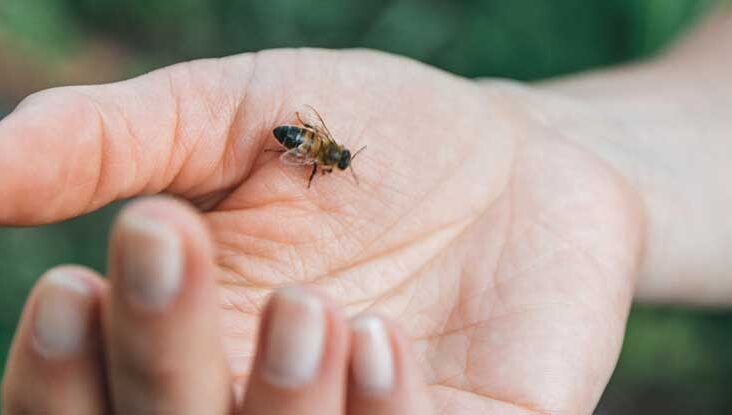
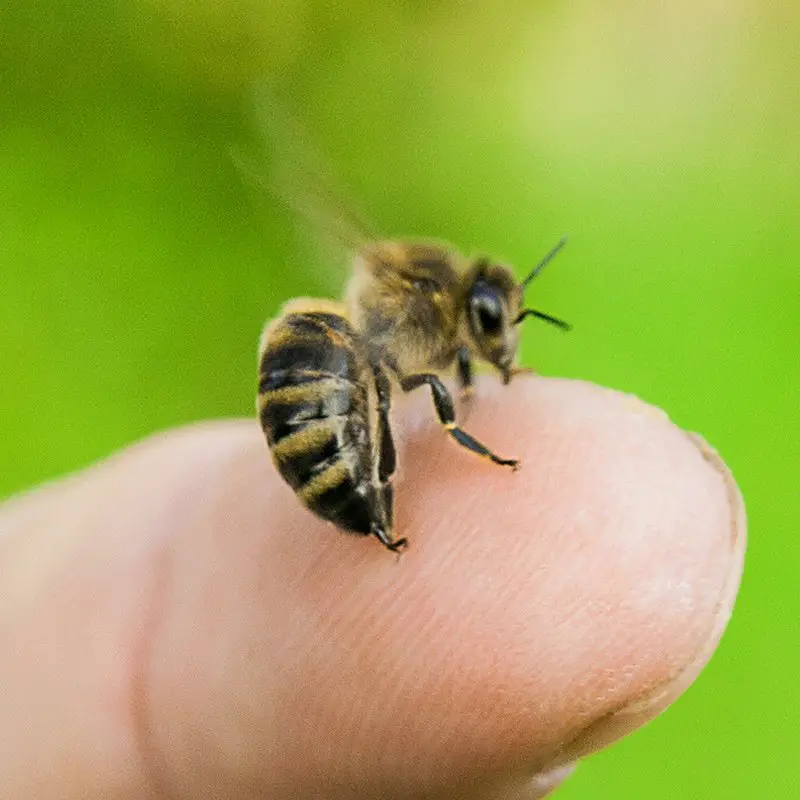
1. Honey: Honey may aid in the healing of wounds and the prevention of infection. Honey is also thought to help treating wounds by releasing oxygen and flushing out dead tissue. Apply a tiny amount of MGH or home honey to the effected area to heal bee stings. Keep on for up to an hour, covered with a loose bandage.
2. Baking Soda: Baking soda and water paste can be used to treat a variety of insect bites and stings. Baking soda is thought to neutralize bee venom, reducing irritation and swelling.
The following recipe for baking soda paste to relieve mosquito bites is provided by the Centers for Disease Control and Prevention (CDC). Many people use it to treat bee stings as well:
- Mix 1 teaspoon water with enough baking soda to make a thick paste.
- Rub the paste over the affected area.
- Leave on for 10 minutes.
- Rinse off
Another option is to cover the paste with a bandage and leave it on for 15 minutes before rinsing it away to help it take action.
3. Toothpaste: There is no scientific proof that toothpaste can help with bee stings. People believe, however, that alkaline toothpaste (low pH) neutralizes acidic honey bee venom (high pH).
It is thought that toothpaste, like baking soda, will pull out venom. Mint varieties are thought to have a cooling and relaxing effect.
In any case, toothpaste is a cheap and simple home cure to attempt. Simply apply a small amount to the area affected and wipe away after 10 to 20 minutes.
4. Apple Cider Vinegar: Apple cider vinegar, according to some persons, can neutralize bee venom, prevent infection, and reduce irritation. Soak your bee sting for at least 15 minutes in diluted apple cider vinegar. You can also soak a bandage or cloth in vinegar and apply it directly to the sting spot. If this method irritates you, stop using it.
5. Aspirin Paste: Applying wet aspirin — or aspirin paste — to the sting site is another long-standing home method for lessening the pain of a bee stung. This is done by crushing one uncoated aspirin tablet and combining it with water to make a paste.
The following suggestions can help you avoid being stung by bees:
- When drinking sugary beverages outside, be cautious. Because you can see whether a bee is in them, wide, open cups may be your best option. Before drinking from cans or straws, inspect them.
- Cover food containers and trash cans completely.
- Remove trash, fallen fruit, and dog or other animal waste.
- When walking outside, wear closed-toe shoes.
- Wearing bright colors or floral prints can attract bees, so avoid them.
- Wear tight clothing to avoid trapping bees between the garment and your skin.
- Keep your windows rolled up while driving.
- Be careful when mowing the lawn or trimming vegetation, activities that might arouse insects in a beehive or wasp nest.
- Have hives and nests near your home removed by a professional.
https://www.wonderopolis.org/wonder/why-do-bees-sting#:~:text=Honey%20bees%20defend%20their%20homes,and%20try%20to%20sting%20you.
https://morningchores.com/bee-attack/
https://www.mayoclinic.org/diseases-conditions/bee-stings/symptoms-causes/syc-20353869
https://www.healthline.com/health/outdoor-health/home-remedies-for-bee-stings#home-remedies
Access Date: May 2022


